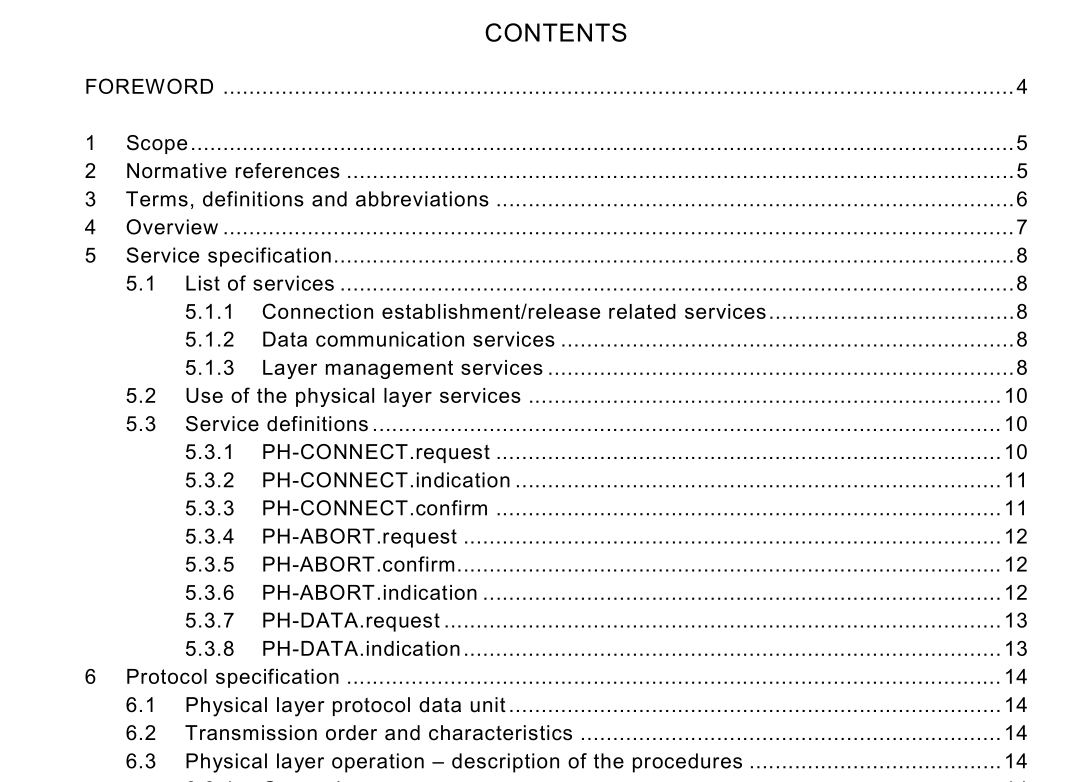IEC 62056-42 pdf download

IEC 62056-42 pdf download.Electricity metering – Data exchange for meter reading, tariff and load control
1 Scope
This part of IEC 62056 specifies the physical layer services and protocols within the Companion Specification for Energy Metering (COSEM) three-layer connection oriented profile for asynchronous data communication. The document does not specify physical layer signals and mechanical aspects. Local, implementation-specific issues are also not specified. In annex A, an example of how this physical layer can be used for data exchange through the Public Switched Telephone Network (PSTN) using intelligent Hayes modems is given. The use of the physical layer for the purposes of direct local data exchange using an optical port or a current loop physical interface is specified in IEC 62056-21 . Annex B gives an explanation of the role of data models and protocols in electricity meter data exchange.
3 Terms, definitions and abbreviations
3.1 Terms and definitions For the purpose of this part of IEC 62056, the definitions in IEC 60050-300 and IEC/TR 62051 as well as the following definitions apply: 3.1.1 client a station asking for services, normally the master station 3.1.2 master central station – station which takes the initiative and controls the data flow 3.1 .3 server a station delivering services. The tariff device (meter) is normally the server, delivering the requested values or executing the requested tasks 3.1 .4 slave station responding to requests of a master station. The tariff device (meter) is normally a slave station From the physical connection point of view, all communications involve two sets of equipment represented by the terms caller system and called system. The caller is the system that decides to initiate a communication with a remote system known as the called party; these denominations remain valid throughout the duration of the communication. A communication is broken down into a certain number of transactions. Each transaction is represented by a transmission from the transmitter to the receiver. During the sequence of transactions, the caller and called systems take turns to act as transmitter and receiver. From the data link point of view the central station normally acts as a master, taking the initiative and controlling the data flow. The tariff device is the slave, responding to the master station. From the application point of view the central station normally acts as a client asking for services, and the tariff device acts as a server delivering the requested services. The situation involving a caller client and a called server is undoubtedly the most frequent case, but a communication based on a caller server and a called client is also possible, in particular to report the occurrence of an urgent alarm.
The structure and the contents of the PhConnReqParams parameter depend on the value of the PhConnType parameter. For example, in the case of a PSTN connection it includes the phone number of the remote station, etc. As – similarly to the PhConnType parameter – the PhConnReqParams parameter contains implementation dependent data, data types/values for this parameter are not specified in this standard. Use The PH-CONNECT.request primitive is used for the establishment of a physical connection. The receipt of this primitive causes the PH-Layer entity to perform the required actions, for example dial the specified phone number, to establish a physical connection with the peer physical layer entity. An example of these actions in the case of an intelligent Hayes modem is given in annex A. 5.3.2 PH-CONNECT.indication Function This primitive is generated by the physical layer entity to indicate to the service user entity that a remote device requests that a physical connection to the local physical layer be established.









